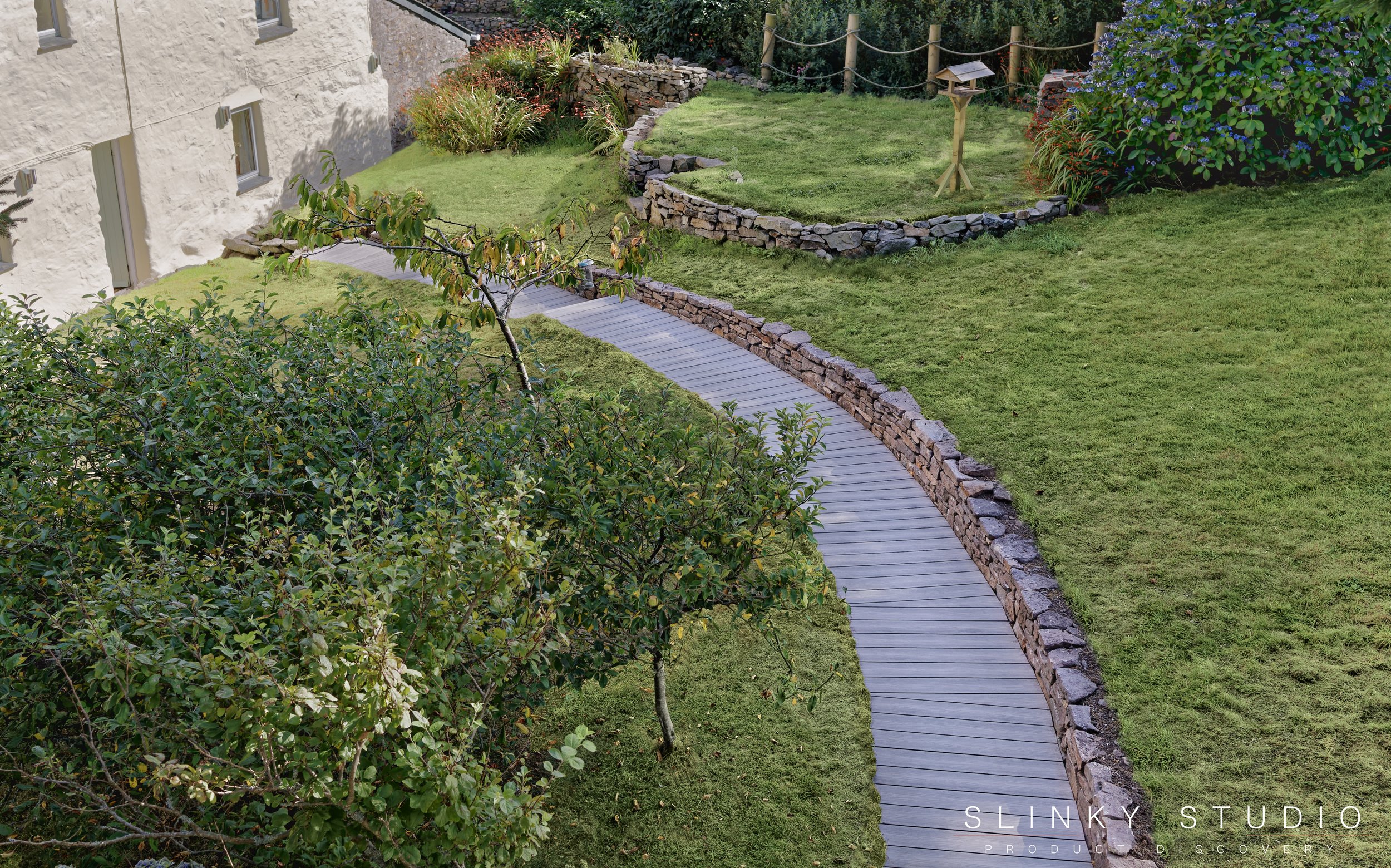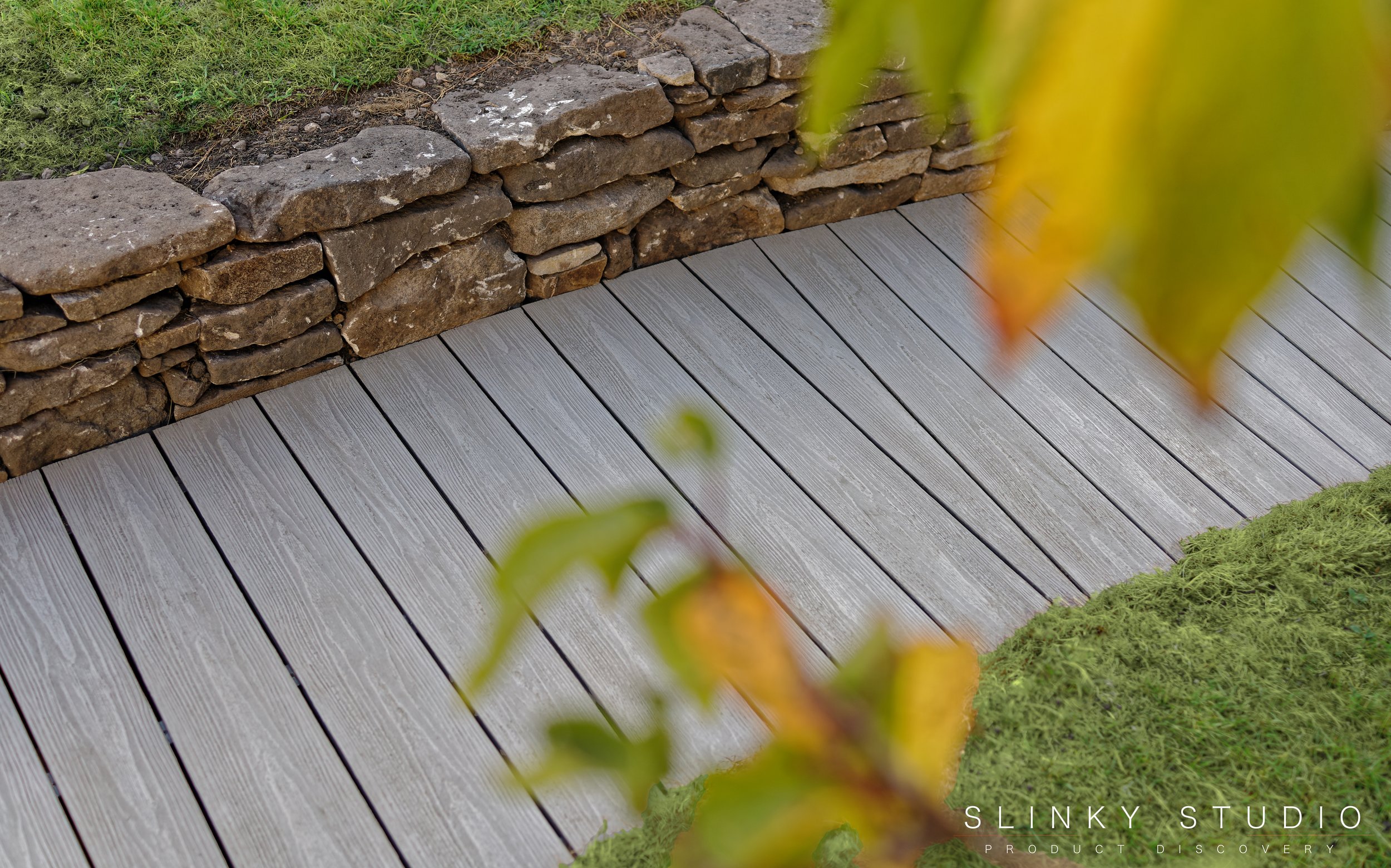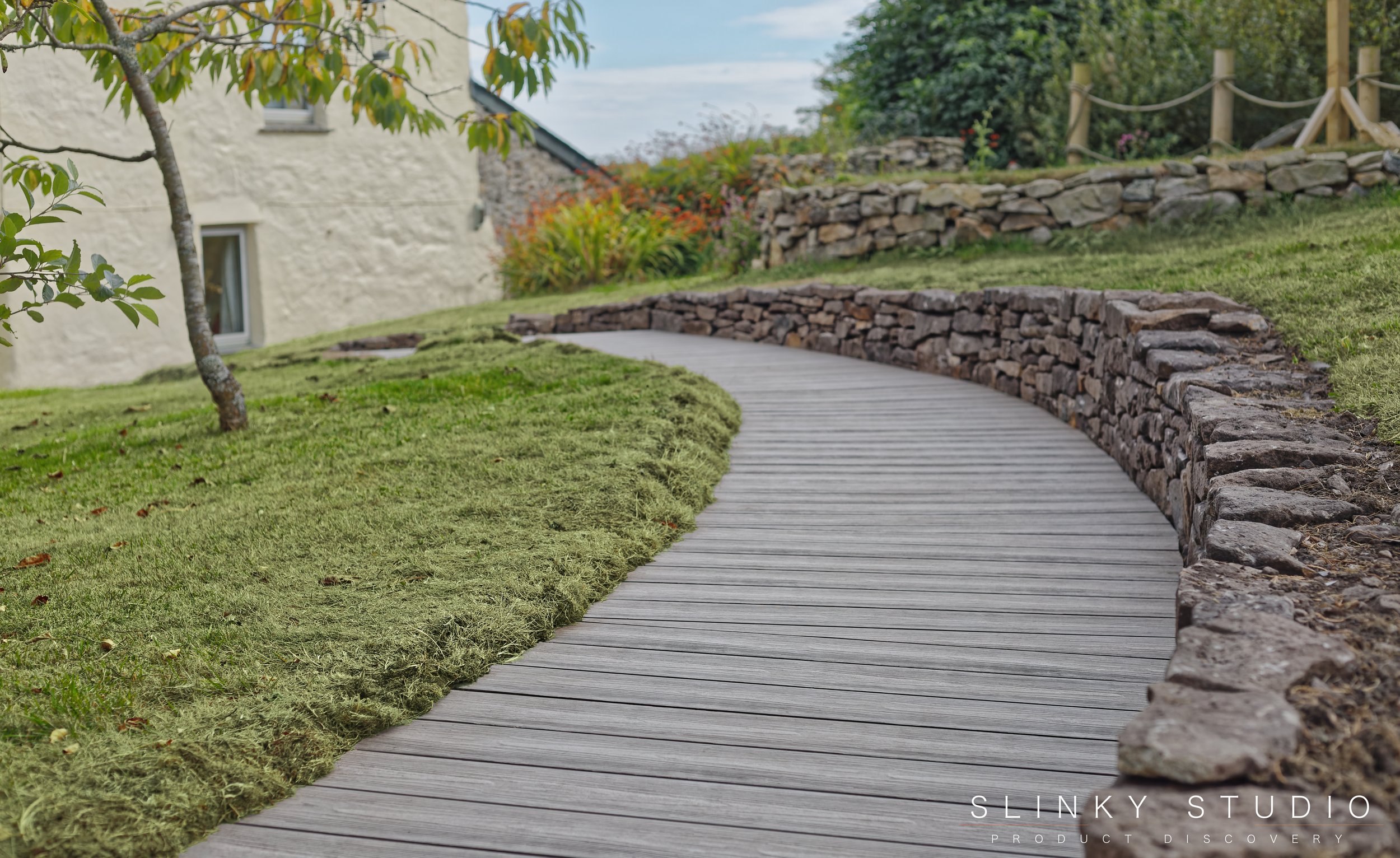Envirobuild Hyperion Explorer Composite Decking Review
At the studio we needed a new pathway and rather fancied a boardwalk type surface to wend its way to our doors. On this note we thought let's go for a sustainable and everlasting composite board path, and to this end the Envirobuild name came to mind, so we decided to see how their composite boards worked out for the purpose.
Choice of boards
Envirobuild offer a good selection of boards through their Hyperion Pioneer, Explorer and Frontier range. All their boards are made from 90% recycled materials, which we feel is very important when using this type of product. In fact, the the company claim that their composite boards have a 64% lower Global Warming Potential than timber - all this is good to know when it also comes with a 15 year warranty and should most probably last a lifetime.
All three of the Hyperion boards have choices of different finishes and we wanted a good woodgrain look. The Explorer Silver Birch won us over, with an embossed woodgrain effect and the fact that it can be supplied in 4 metre lengths. This meant that we can produce a one metre wide pathway without any waste whatsoever. We also needed edge boards for two steps to raise our path upwards. This comes in 2.5 metre lengths, so for our use was ideal. Envirobuild can supply all the fixings and screws according to the lengths of material ordered. Our order arrived with sufficient fixings and we were immediately impressed with the Silver Birch grain look and finish.
Fixing the base
First of all we had to do the ground work to allow the depth needed for a firm base to hold our joists in place before fixing the decking. Keeping to the sustainable and everlasting theme, we decided on using composite joists for this purpose. Three joists across the width of our 1 metre path width seemed ideal. These we fastened onto broken concrete flagstones and concrete blocks, all very carefully levelled and firmly fitted in place. Because our pathway is basically one very long curve, the flexibility of the particular composite joists we used made these easier to place than the wood alternative; another plus for utilising recycled composite material over cutting down more trees for the project.




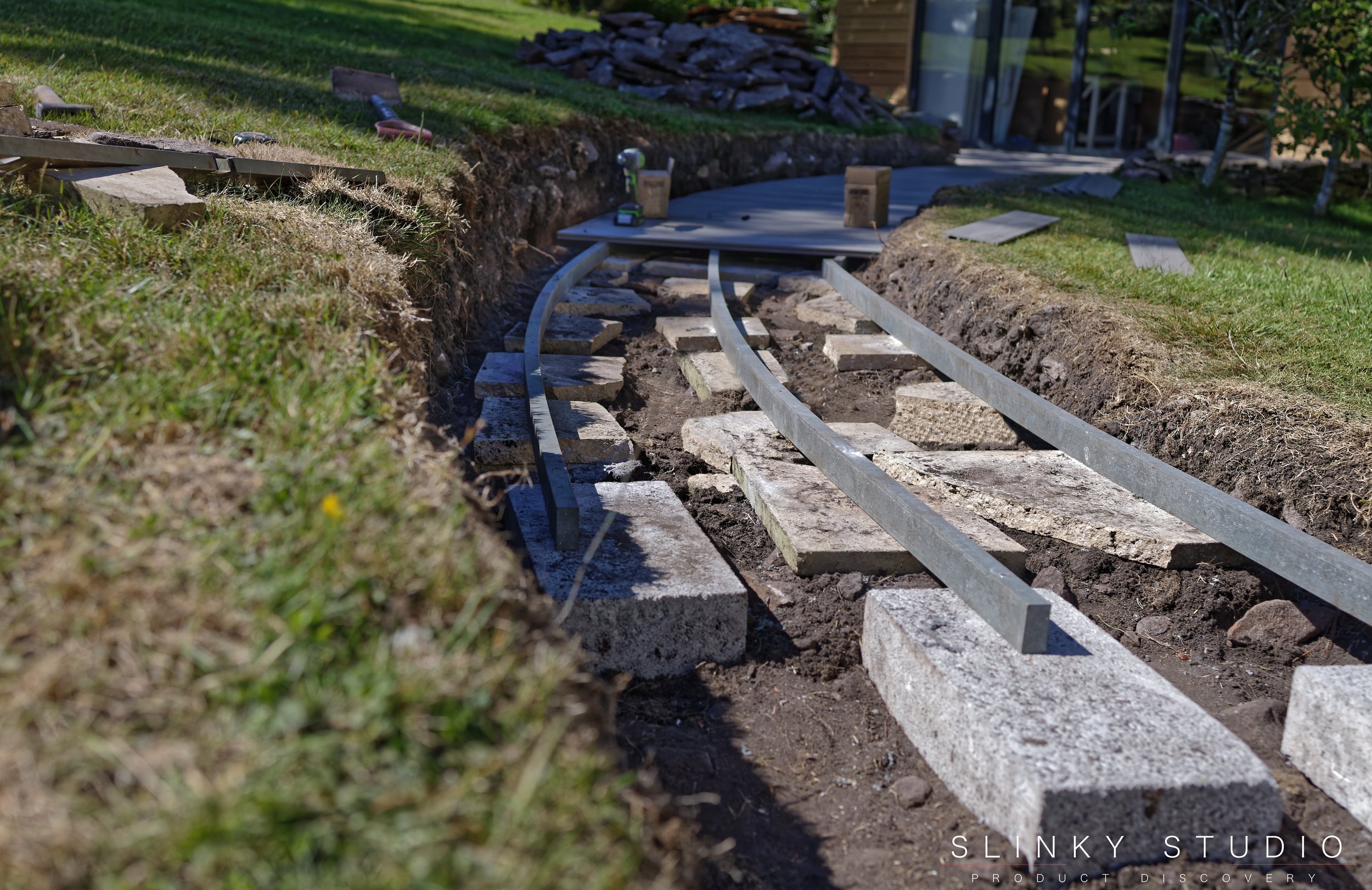
Laying the boards
Once the base was finished, we started cutting the 4 metre lengths of Envirobuild's Hyperion Silver Birch decking boards into four 1 metre lengths using a circular saw. The material is easy to mark and cut cleanly and efficiently. We started off laying our pathway against some existing decking, so first used the starter fasteners, allowing for a suitable gap. From then on we used Envirobuild's standard 6mm gap plastic hidden fasteners. These clip into the grooves on the side of each board and are held tightly in place by a single screw - truly simple. The beauty of these clips is that you can remove any single board in the future from any part of your project, and also you do not need to fasten directly through any boards, thus avoiding damaging them. The clips are fairly well hidden within the 6mm gaps and we think the whole layout of the boards looks great. On that point, it is also a good idea to keep checking that you are not using the same grain effect on abutting boards - this can often be rectified by just turning the board around.





The curve
When dealing with the curve we cut the full length of Envirobuild board at an angle to narrow it on the inside of the semicircle. This means that the gaps between the boards always remains the same, with the hidden fasteners still able to be used throughout. Where the groove that enables the fasteners to be used disappears due to the angle of the cut, the excess composite material is easily removed with a multipurpose tool. This is something that was made considerably easier because of the hollowed out nature of the Hyperion Explorer decking, and a point worth considering before purchasing solid composite decking to make up a curve.
Producing easy formed steps with Envirobuild
We kept our pathway flat with the original decking for as long as possible by channelling it out through the lawned area. However, the drop is such that steps were inevitable, and we placed these at two regular intervals three metres apart. Here we utilised the Envirobuild edge board which made the process very easy. Making sure the end of our joists landed on the edge of a standard concrete block, we first fitted the edge board with the hidden fasteners then worked the boardwalk boards up to this, cutting the final one to fit. On the face of the step we once again used the hidden fasteners to fit one board under the edge board. We also used the hidden fasteners under that facing board because we knew the next level of path would cut in just above the bottom of this and hide them. This really is the quickest and simplest way to make completely solid and safe steps.
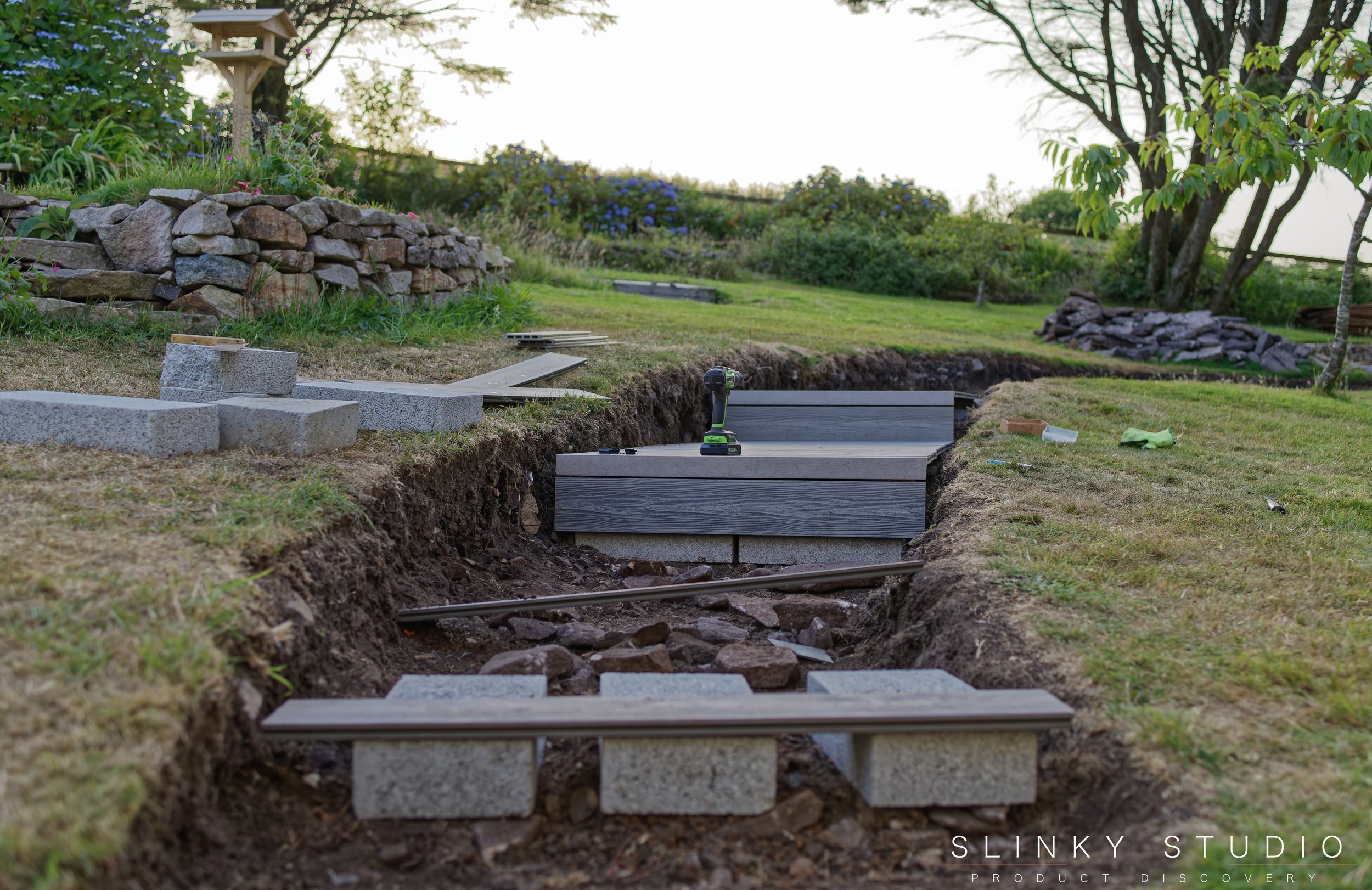
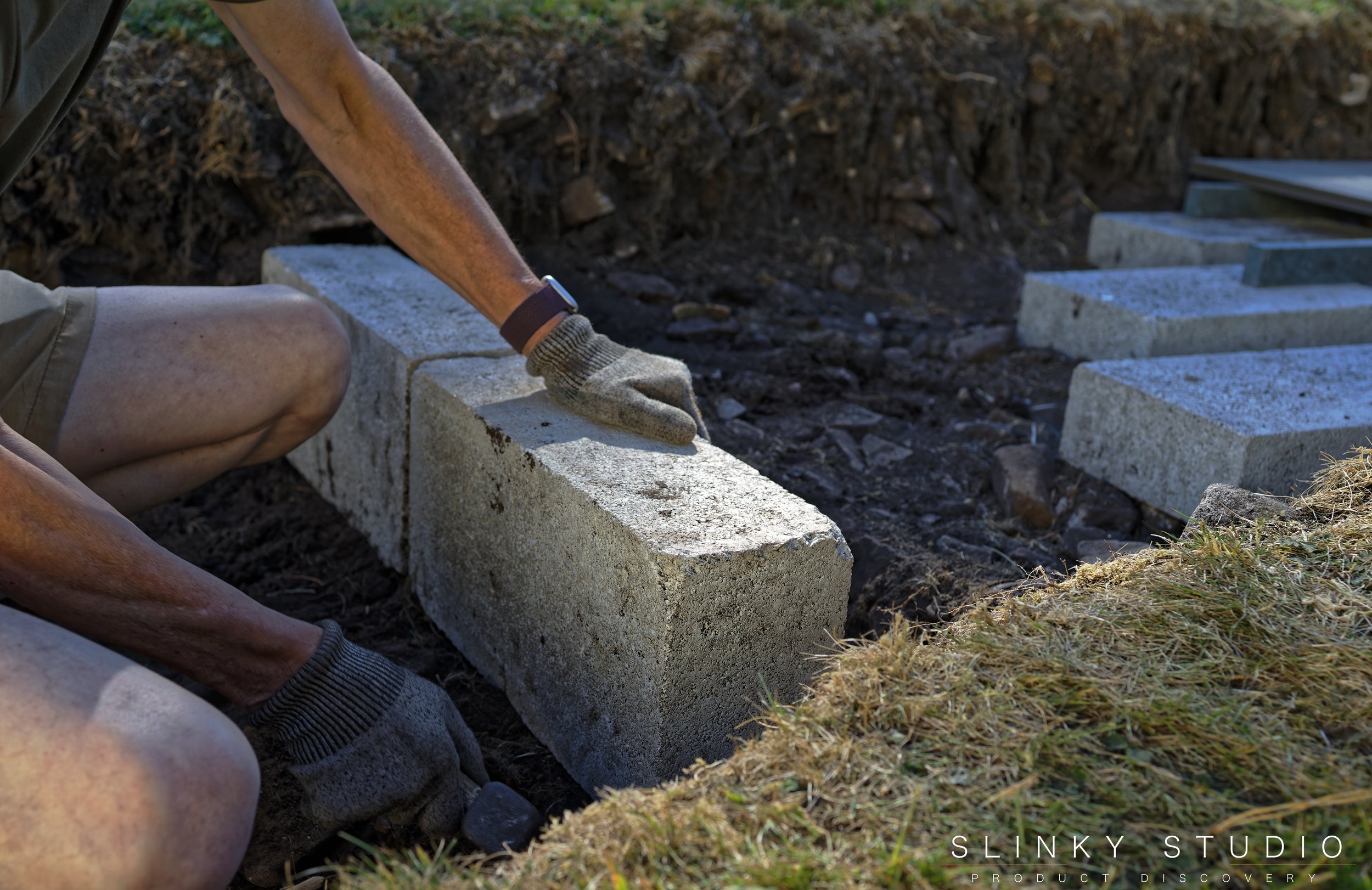





Finishing
Once the complete path was fitted we cut the edge of the boards into the curve making sure only to remove a minimal amount of material. A jigsaw worked fine for this. The Hyperion range of composite material seems easy to cut and work with. In our case there was enough granite found in the lawn whilst digging the path to build a small granite retaining wall alongside the boardwalk, and we wanted the lawn to naturally edge onto the other side.
In use
Firstly, it has to be said that the Envirobuild Hyperion Explorer decking board path looks amazing and laying the path using their fittings was truly simple. The embossed wood grain of the Silver Birch finish is very effective and the look is set off by the 6mm gaps. The surface is flat and matt, and completely firm to the step even in the wettest of conditions; something that can definitely not be said of wood decked walkways. Because both the joists and the boards are made of composite material the pathway is very comfortable to walk on, with just a little springiness to the material - it is also very quiet. The great thing is that by using the 90% recycled Envirobuild materials, not only are we helping the environment and saving trees, but we have produced a pathway that needs no maintenance; no staining, oiling or future rotting - truly a path for life!

